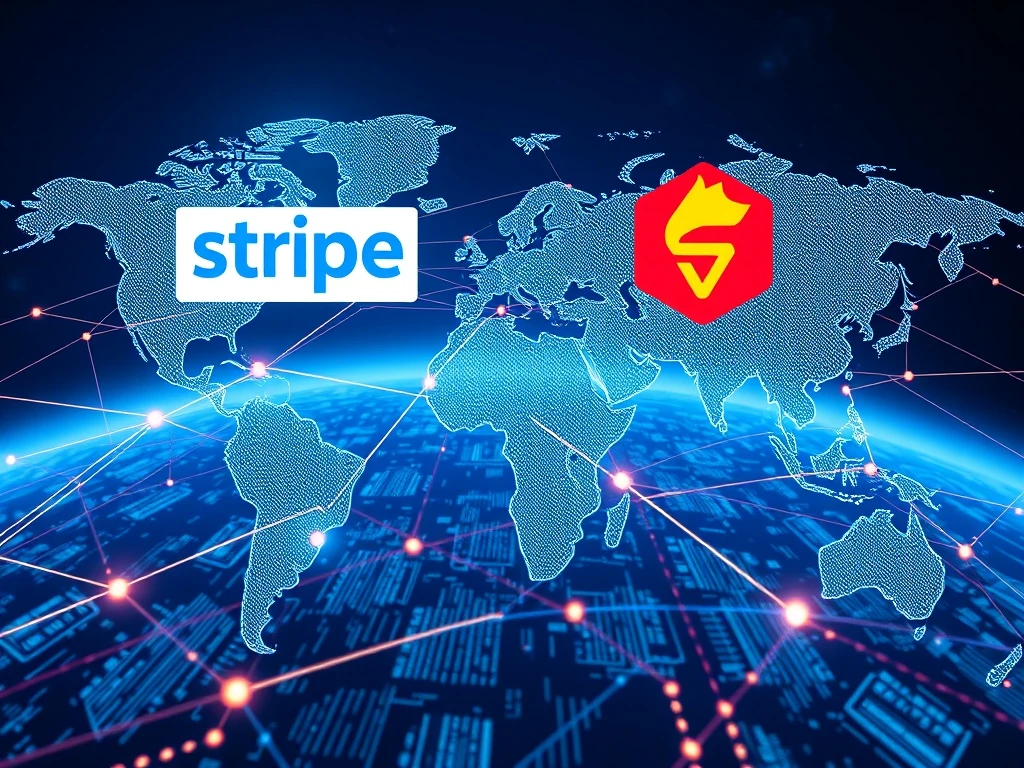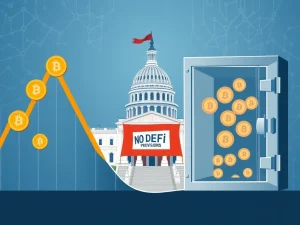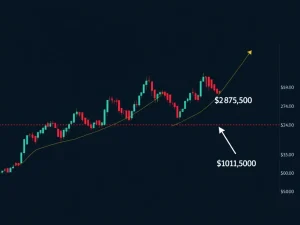Stablecoin Rails: Revolutionizing Global Payments with Stripe Tempo and Fireblocks Network

The quest for efficient global money flow is reaching a critical juncture. Specifically, the race for **stablecoin rails** is accelerating. Traditional finance giants and innovative crypto infrastructure companies are now betting big on this future. This intense competition promises to reshape how value moves across borders. Companies like Stripe and Fireblocks are at the forefront of this transformation, introducing powerful new solutions.
Stripe Tempo: A New Layer-1 for Global Payments
Stripe, a leading financial technology firm, has entered the fray with a significant announcement. CEO Patrick Collison recently unveiled Tempo. This new layer-1 blockchain is specifically designed for stablecoin transactions. Furthermore, Tempo aims to address critical gaps in existing blockchain infrastructure. For instance, current blockchains often denominate fees in specific tokens. This can confuse users accustomed to fiat currencies.
Collison explained that Tempo prioritizes real-world financial applications. He stated, “It’s valuable for real-world financial applications that fees be denominated in a fiat currency that makes sense to the user.” Tempo was incubated by Stripe and venture capital firm Paradigm. Therefore, it brings substantial backing and expertise. Stripe views Tempo as a payments-oriented L1. It is optimized for high-scale financial services. This strategic move highlights Stripe’s commitment to advancing **global payments** through blockchain technology.
Fireblocks Network: Enhancing Crypto Infrastructure and Compliance
Meanwhile, blockchain infrastructure provider Fireblocks has also launched a global stablecoin payment network. This network emphasizes compliance and connectivity. Ran Goldi, Fireblocks’ senior vice president of Payments and Network, detailed its focus. He spoke about “programmable, compliant, real-time money movement.” Many companies exploring stablecoin payments face significant challenges. They encounter a complex mix of banking, liquidity, and compliance partners. This patchwork often makes scaling very difficult.
Fireblocks’ new network aims to simplify stablecoin adoption. It connects firms to over 40 pre-vetted providers. These providers span more than 100 countries. This initiative significantly strengthens **crypto infrastructure**. It provides a streamlined solution for businesses. The network’s design prioritizes interoperability. This ensures smoother operations across diverse financial ecosystems. Consequently, it makes stablecoin integration more accessible for enterprises worldwide.

The Accelerating Stablecoin Market and Interoperability
The stablecoin market continues its impressive growth trajectory. According to DefiLlama, the overall market cap for fiat-pegged cryptocurrencies has reached $281.2 billion. This robust growth underscores the increasing demand for digital currencies tied to traditional assets. Interoperability has become a central strategic element for stablecoin issuers. They actively push to launch across multiple blockchains. However, they often struggle with fragmented liquidity. Dispersed user bases also present significant hurdles.
Cross-chain solutions are emerging to tackle these issues. For example, in September 2023, the Wormhole cross-chain bridge integrated Circle’s Cross-Chain Transfer Protocol. This integration allowed USD Coin (USDC) transfers to four blockchain networks. Such developments are crucial for the widespread adoption of **stablecoin rails**. They ensure that stablecoins can move freely and efficiently between different blockchain environments. This seamless movement is vital for realizing their full potential.
Intense Competition in Global Payments
The landscape for stablecoin payment rails is highly competitive. Fireblocks and Tempo will compete with established payment processors. Companies like Visa and Mastercard have already entered the crypto industry. Visa, for instance, announced in July that it was increasing stablecoins on its settlement platform. This move was a direct response to growing competition. Traditional financial institutions are clearly recognizing the threat and opportunity presented by stablecoins.
Crypto-native companies also provide strong competition. Ripple, known for its XRP ledger, announced plans in August to acquire stablecoin payment platform Rail. Similarly, Stellar operates a decentralized payments network. It is designed specifically for cross-border transactions. These players are well-positioned to challenge newcomers. New data from Artemis in May revealed significant growth. Stablecoin payment volume reached $94 billion. This surge was driven by two key sectors: business-to-business (B2B) transactions and card-linked stablecoin payments. This trend confirms the increasing utility of stablecoins in **global payments**.
The Advantages of Programmable Money and Future Outlook
Stablecoins are essentially a form of programmable money. They offer distinct benefits compared to traditional fiat currency. Companies issuing stablecoins can embed logic into money using smart contracts. This capability significantly reduces friction and counterparty risk in transactions. For example, automated payments or escrow services become far more efficient. This inherent programmability makes stablecoins attractive for various applications.
Traditional financial institutions are also showing considerable interest. JPMorgan Chase and Citigroup have both explored entry into the stablecoin sector. This indicates a broader acceptance of stablecoin technology. The emergence of **Stripe Tempo** and the **Fireblocks network** marks a pivotal moment. These initiatives are not merely about new products. They represent a fundamental shift in the architecture of global finance. The ongoing innovation in **crypto infrastructure** will likely drive further adoption. This will ultimately create a more connected and efficient global economy. The future of payments is undeniably digital and increasingly reliant on stablecoins.









